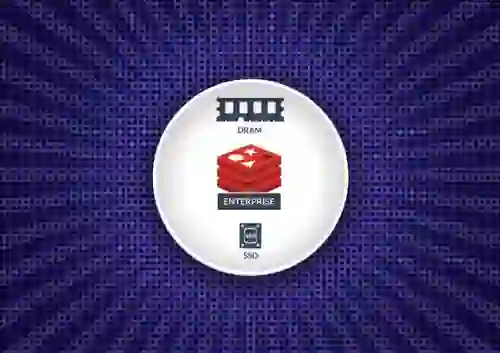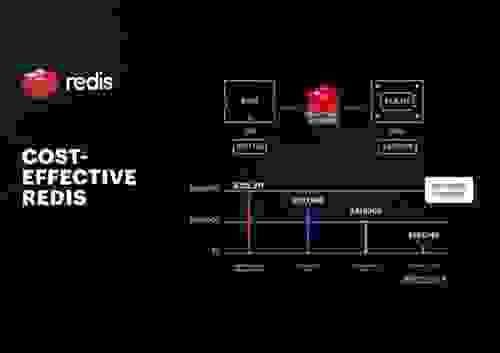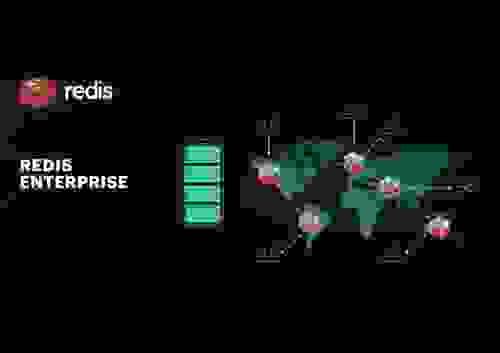Note: This article was originally published May 6, 2022. It has been updated to add new product information.
ElastiCache used to be the easiest way to run Redis in the cloud. But times have changed. Now that Amazon’s moving away from Redis as the core of ElastiCache, ElastiCache is a dead end. Customers now need to make a choice:
- Stick with ElastiCache on open source Redis 7.2 or earlier.
- Migrate to ElastiCache using a different foundational technology.
- Move to Redis Cloud.
The first two options leave you missing out on the latest Redis updates. Option three, Redis Cloud—built by those who created Redis—keeps you ahead with advanced features, better performance, and a flexible deployment model.
So, how do you know if it’s time to move on? Here are the telltale signs:
1. AWS lock-in doesn’t fit your deployment strategy
Hybrid and multicloud deployments are now standard, especially for large enterprises—89% use multicloud and 73% run a hybrid on-prem and cloud strategy. It’s how they meet compliance requirements, manage complex tech, and stay free from vendor lock-in. Your cache solution should do the same—be flexible enough to support any deployment and adapt as needed. And don’t forget about the clients; don’t let that lock your app in. Redis maintains 6 official clients in 5 native programming languages for developer flexibility.
2. Your global user base struggles with lag
As businesses scale, they need to cache data across multiple regions to support global operations and customers. But with ElastiCache, you can’t read and write to multiple Redis instances at the same time, so you can’t keep data access close to all users. This causes latency as data moves between regions. It’s a major issue for companies expanding globally or managing large, distributed user bases.
3. Your rising data volumes are pushing up costs and complexity
In-memory storage is fast but expensive—and what starts small can quickly escalate as data piles up. ElastiCache’s single-tenant architecture and limited tiering can lead to wasted resources and inefficient scaling. That’s where Redis Flex steps up: Powered by the advanced SpeeDB storage engine, it delivers efficient data tiering that scales from gigabytes to terabytes with the resilience and performance that your large, business-critical datasets need.
4. Data is stuck in your database and hard to get into your cache
Your app is built on Redis, but still relies on slow data in your system of record (SOR). Building and maintaining data pipelines to sync them is complex and time-consuming. Redis Data Integration (RDI) changes that by automatically rehydrating Redis with changes from your SOR, so you always have the latest data without the extra complexity. Now your team can focus on building innovative features instead of managing data flows.
5. Your data is at risk—and you don’t know it
When caching business-critical information, data loss or inconsistency can disrupt operations and impact user experiences. ElastiCache’s limited durability features means you can lose up to 1 hour of data, putting your apps at risk. Because apps rely on accurate, persistent data, a modern cache is necessary to maintain data integrity and resilience, no matter what. With Redis Cloud, your business will run smoothly, even if things go wrong.
6. You’re leaving valuable data underutilized in your cache
Sure, ElastiCache can handle basic key-value lookups just fine. But Redis goes beyond that. With Redis, you can search, query, aggregate, and filter that data in real time. With Redis, your data becomes a dynamic asset, giving you the power to analyze millions of records with sub-millisecond speed using the built-in Redis Query Engine. It’s perfect for apps that need instant insights, whether for personalized user experiences, anomaly detection, or real-time operational decisions.
If you’re facing these challenges, it’s time to consider Redis Cloud. Built by the team who brought you Redis, we’ve engineered Redis Cloud to deliver real-time speed and resilience at any scale—whether you’re running a simple cache or using Redis as your real-time data platform.
Redis Cloud isn’t just for flexible and high-performing caches. It’s built to power mission-critical apps in gaming, finance, retail, and more. It scales seamlessly with your business needs, keeping costs in check and delivering the reliability your users need—every time.
Redis outperforms ElastiCache where it counts:
Deploy your way
| Amazon ElastiCache | Redis |
|---|---|
| Single cloud Only available as a fully managed cache on AWS. |
On-prem, hybrid and multicloud Achieve real-time performance across your apps with a fully managed database and cache on AWS, Azure, and Google Cloud. Designed for modern tech stacks, we support on-prem, hybrid, and multicloud deployments, giving your apps flexibility and reliability. |
Global scale & high availability
| ElastiCache | Redis |
|---|---|
| Active-Passive
ElastiCache only supports one-way data replication from one cache cluster to destination clusters in other regions (in AWS only) with active-passive (replica-of) setups. This setup only scales read volume. Writes still go through the primary cluster, which means higher latency and slower scaling for write-heavy apps. Plus, ElastiCache’s approach doesn’t give you the added resilience of replicating data across multiple clouds and on-premises. ElastiCache’s replication provides an SLA for 99.99% availability. |
Active-Active geo distribution
Redis goes beyond Active-Passive replication. With Active-Active Geo Distribution, you can create a unified, scalable cache that supports bidirectional replication—across regions, clouds, and even on-prem environments. Active-Active delivers fast local latency no matter the number of geo-replicated regions (or their distance) supported by smooth conflict resolution so you can read and write to multiple cache nodes at the same time. Our Active-Active Geo Distribution brings an industry-leading SLA for 99.999% availability, saving you over 45 minutes of downtime per year over ElastiCache |
Smart on costs
| ElastiCache | Redis |
|---|---|
| Data tiering ElastiCache recently introduced tiered storage, keeping frequently accessed data in RAM while moving less-frequently accessed data to SSD. Data tiering is made for large and expensive datasets that are critical to business operations and need to be persistent. But ElastiCache’s tiering doesn’t support data persistence, making it a risky choice for those use cases.ElastiCache’s data tiering doesn’t support all use-cases; only supporting eviction policies for volatile-least recently used, all keys-least recently used, and no eviction max memory policies. |
Redis Flex Redis Flex offers advanced data tiering with its SpeeDB-powered SSD storage engine. It cuts costs from small 1GB datasets all the way up to tens of terabytes, and speeds up replication times by breaking datasets into smaller shards and running them in parallel, boosting throughput. Redis Flex powers additional use-cases, supporting ever-growing datasets with no eviction policies. |
| Single tenant ElastiCache is strictly single-tenant, meaning each Redis instance needs its own node—and you’re charged for every single one. Scaling up ends up benefitting the service provider more than you. |
Multi-tenant Redis lets you run multiple datastores under a single subscription. Each dataset has its own Redis database endpoint, which is completely isolated from the others. Multiple dedicated datastores can be run on shared underlying infrastructure without physical resources. This setup helps you scale up while keeping deployment costs down. |
Real-time data ingestion
| ElastiCache | Redis |
|---|---|
| Manual and complex Ingesting and managing data between ElastiCache and other databases can be complex. Developers often need to build and maintain custom data pipelines, constantly assure sync state, and handle inconsistencies manually. To do this, they typically rely on AWS-centric tools like Kinesis or Lambda functions, which not only add complexity but also lock you further into the AWS ecosystem. This adds latency and complexity, making it tough to keep data accurate and real-time. Without automated data integration, ElastiCache becomes a bottleneck, limiting scalability and forcing teams to focus more on maintenance than innovation. |
Built-in With Redis Data Integration (RDI), syncing data from other databases is no headache. Forget about building complex data pipelines or juggling AWS tools—RDI does it all for you automatically and in real time. Your data is always up-to-date, so your apps run fast and stay consistent without the management nightmare. Best of all, it frees you to focus on what matters— innovating and delivering great experiences. |
Data durability
| ElastiCache | Redis |
|---|---|
| RDB backups ElastiCache supports snapshots with RDB. Snapshots can be done hourly and up to 20 times per day on demand. |
Multiple durability options Redis gives you flexibility with several durability options, including full data persistence: Redis database (RDB): RDB persistence performs point-in-time snapshots of your dataset at specified intervals. |
Search & query
| ElastiCache | Redis |
|---|---|
| Manual indexing, simple queries, and no search ElastiCache works for simple key-value lookups, but it doesn’t have built-in secondary indexing. Sets, sorted sets, and lists can be used as workarounds to index values, but using these data structures this way adds overhead, disrupts performance, and increases development complexity. With no built-in search capabilities for full text or vector similarity, you’re stuck building search functions yourself, adding even more complexity and costs. |
Built-in secondary indexing, advanced queries, and search algorithms
Redis comes with built-in secondary indexing, advanced querying capabilities and search algorithms using the Redis Query Engine. Our rich query language makes it easy to build what you need. Built-in search and query give you more control and flexibility over your data, so your apps can make real-time decisions based on what’s in your cache or session store. |
Want to learn more?
Read more about Redis’s advanced capabilities and view a full feature comparison with ElastiCache
.wp-block-related .carousel-item h3 {
font-size: 18px !important;
margin: 0;
color: #6d7278 !important;
padding: 0 20px;
font-weight: 600;
}
The post ElastiCache isn’t Redis. Don’t settle for less. appeared first on Redis.


